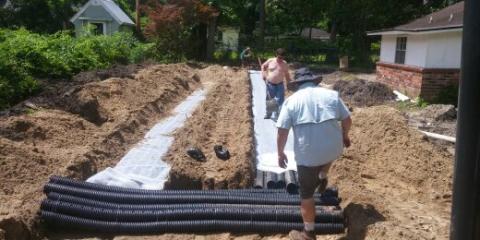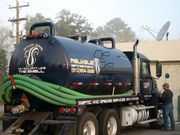Discover the Basics of Septic System Installation

If you live in a rural area, you may have a septic system as a part of your home’s plumbing. Septic systems are a bit like small wastewater treatment plants. They’re affordable, convenient, and eco-friendly. If used correctly, they’re also easy to maintain. If you’re building a new home or considering adding a septic system to your existing property, you’ll need to call a septic tank installation company to do the job.
Here are the basic steps to septic tank installation:
- Site Inspection: Before installing the septic system, the County Health Department and Soils Scientist will survey the property to determine what size tank and drainage field you’ll need. In doing so, they’ll take into account factors like soil composition and how much wastewater your household is likely to produce. They will perform a percolation test or a site evaluation.
- Permits: They’ll also acquire the necessary permits. Most municipalities and counties have rules regarding septic system installation. Contractors are familiar with these codes and will know what kinds of permits are required. Failure to obtain permits or comply with regulations could result in a hefty fine.
 Tank & Drain Field Installation: Once the contractor has evaluated the site and obtained the permits, they’ll begin the installation. Most of the time, the septic system will be buried in a hole underground in your backyard. The contractor will leave an access hatch exposed to allow for future maintenance and pumping. They’ll also establish the drainage field area.
Tank & Drain Field Installation: Once the contractor has evaluated the site and obtained the permits, they’ll begin the installation. Most of the time, the septic system will be buried in a hole underground in your backyard. The contractor will leave an access hatch exposed to allow for future maintenance and pumping. They’ll also establish the drainage field area. - Septic Line Installation: After installing the tank, the contractor will place the drainfield lines. These pipes must be put on a downward slope to allow gravity to direct wastewater from your home to the tank. If there is no slope, the contractor will install a sump pump to move the waste to the drain. They’ll then connect the lines with the building’s existing plumbing and install the drain.
Once waste flows out of the pipes, through the drain, and into the tank, bacteria breaks down the materials, creating three layers. The lower layer contains solids, which will take longer to break down. The middle layer is liquid, and the third layer is composed of grime that floats at the top. After breaking down, the liquid is transferred to the drain field, where it flows through porous material and is cleansed before returning to the soil.
For septic system installation and maintenance in the Savannah, GA, area, call Reliable Septic Services at (912) 604-3088. To learn more about the company and what they can do for you, visit their website.
About the Business
Have a question? Ask the experts!
Send your question

